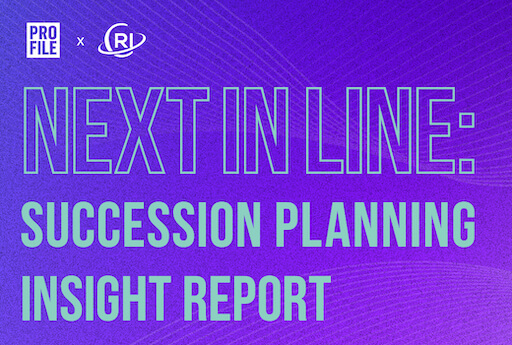Updated January 29, 2024
AI Standards
At Guerrero, our mission is to close the opportunity gap for multicultural professionals by opening doors, making careers, and helping build great diverse companies. One of our main vehicles for that mission is through storytelling.
We live in an age of digital innovation, and it would be a mistake for us not to integrate these advances into our creative and marketing processes.
But digital innovation far outpaces what is written into law, especially when it comes to artificial intelligence (AI). In this document, we outline our approach to integrating AI into our processes and how we will hold ourselves accountable as AI usage evolves.
Guerrero’s AI Principles →
How Guerrero Approaches AI with Our Publishing →
Where and How We’re Using AI →
Guerrero’s AI
Principles
Adopted from the MarketingAI Institute
- We believe in the responsible design, development, deployment, and operation of AI technologies.
- We believe in a human-centered approach to AI that empowers and augments professionals. AI technologies should be assistive, not autonomous.
- We believe that humans remain accountable for all decisions and actions, even when assisted by AI. The human must remain in the loop in all AI applications.
- We believe in the critical role of human knowledge, experience, emotion, and imagination in creativity.
- We believe in the power of language, images, and videos to educate, influence, and affect change. We commit to never knowingly use generative AI technology to deceive; to produce content for the sole benefit of financial gain; or to spread falsehoods, misinformation, disinformation, or propaganda.
- We believe in understanding the limitations and dangers of AI and considering those factors in all of our decisions and actions.
- We believe that transparency in data collection and AI usage is essential in order to maintain the trust of our audiences and stakeholders.
- We believe in personalization without invasion of privacy, including strict adherence to data privacy laws, mitigation of privacy risks for consumers, and following our moral compass when legal precedent lags behind AI innovation.
- We believe in intelligent automation with dehumanization, and the potential of AI to have profound benefits for humanity and society.
- We believe in using AI to build a premier advancement platform for a multicultural America that recognizes, promotes, and connects great executives.
How Guerrero
Approaches AI
with Our Publishing
When integrating AI into the work we do, we have three primary goals.
Streamline production processes: By leveraging different AI tools throughout our production processes, we will be able to create content more efficiently and publish in a timely manner.
Assist with concept ideation: Our creative and marketing teams will leverage AI during ideation stages to guide original concepts to the next level.
Expand content offerings: Creative team members will leverage AI as a partner in content creation to publish valuable content that boosts our reach and draws new audiences to Guerrero.
Where and How
We’re Using AI
EDITORIAL + MARKETING
All content will be reviewed and approved by a human creative team member prior to publication. Any AI-generated content will include a note at the end of the content to identify AI usage. For example: This article was created with assistance from AI.
Angles & Research
We use generative AI to provide suggested angles for profiles, summarize key points from research reports, and identify key themes from multiple sources. All suggested content is reviewed by a human editor before moving to the stage in production.
Interviews
We leverage AI transcription services to accelerate easy transcription for interview recordings, which are for internal use only. This alleviates writers from transcribing their own interviews and streamlines the draft writing process.
Articles
We use generative AI to assist with first drafts of articles, whether it is ideating on a narrative format or generating an outline. All AI-assisted articles are fact checked and approved by human writers and editors prior to publication. Each AI-assisted article will include a designation that generative AI was used in the creation of the piece.
Editing
We leverage AI as an additional check during copyediting and proofreading, both of which focus on grammar, style, and punctuation changes.All suggested changes are reviewed and approved by a human editor.
We do not use AI for developmental editing, which focuses on the content and structure of the article and is completed prior to copyediting and proofreading.
Headlines, Subject Lines & Marketing Material
We use generative AI tools to ideate header copy across our different content offerings, including article headlines, newsletter subject lines, social media posts, and other marketing copy. This assists writers and editors with ideation as well as ensuring content follows our SEO strategy.
Podcast & Audio Stories
We use AI transcription services to provide a transcription of podcast episodes and any audio-first stories. The transcription will be reviewed by a human editor to account for any error from the transcription.
PHOTO + VIDEO
No work ever produced by AI should imitate existing work or infringe on copyright, as is our current best practices for image/video copyright.
Photographers may use AI to assist in augmenting or creating imagery based on their own derivative work. We must have the copyright to any images or video sources (original in-house material) that are uploaded to trainAI. Additionally, this should be only implemented within an internally approved, ethical AI platform that does not save our content or store in its system library. Only the creators of the original works will use AI on their images as they are authors of the originating work, unless a collaboration is explicitly outlined. We will not use client-submitted images, images found on the web, or freelanced images (unless explicitly licensed for such use).
Generally, there is no need to credit AI when integrated within original artwork (currently the case with Adobe platforms) and when derivative of original artwork (when ethically sourced). For non-feature posts that are exclusively AI-generated, a note will be included at the end of the article designating what was generated by AI.
In-House Imagery
We may integrate AI within our in-house photography, as long as the majority of the authorship is directly from a photographer and uses ethically sourced AI tools. This will be limited to stories where it conceptually fits the theme, or where art direction may be achieved with limited resources and supplements a photoshoot.
AI Imagery + Video
When generating new AI-created imagery and video, we will use content from ethically sourced AI platforms, where artists, artwork, and creators involved are aware of the usage and compensated as such. We will not use programs that pull from the Internet at large. This also applies to selections of premade AI imagery and video.
Every AI-produced image will be curated, reviewed, and approved by a human photo editor to ensure there are no artifacts, errors, or unknown mistakes within the images.
No published video will be 100% AI driven, as video tools require multiple human interventions, settings, and adjustments. A human video editor will ensure there are no artifacts, errors, or unknown mistakes in the work prior to publication.
Video Production
We will use AI that prioritizes automation, AI/automated presets, stock video, and other related tools that save time and allow for more videos to be produced or assist in elevating the quality. Animated text and graphics are preferred over “lifelike and photographic” AI-generated video content.
Ideation
We may use AI for story and mood boards, disclosing in any internal documents as necessary.
Text
We may use generative AI for writing photo captions and alt-text. All AI-generated copy will be reviewed and approved by a human editor. Video captions generated with AI will be reviewed and edited by human video editor/editors.
DESIGN
The following statements refer to visual assets including but not limited to graphics, illustrations, clip arts, artworks, etc. Human designer swill oversee the generation of prompts that refer to their field of practice and operation. In execution of visual materials, AI will play a role of assistant, insight provider, or idea generator.
Idea Generation
We may use generative AI as part of the ideation process and mood board creation to further enhance the work of human designers.
Reduce Reuse Recycle-Ing
We may use AI as source for recycling existing in-house visual content by reshaping, texturizing, or repurposing what was created by ahuman designer. This would be the case if a visual wasn’t used with the feature that it was initially created for or the visual is abstract enough to run with a newly published article. All visuals will be reviewed and approved by a human designer before publishing.
Enhancing Visuals
We may leverage AI to assist in intensifying, upscaling, or complimenting a visual created by a human designer. Any AI-generated visuals will be used with stock assets, in-house imagery, or graphics to create descriptive collages, add missing content, elevate the visual story, or presenta more detailed infographic. Any visuals for publishing prioritizes resources that ensure proper artists’ compensation and provides credibility in sourcing.
Automatization of Design Processes
We may use AI to enhance production through automation, such as renaming layers, recoloring artworks, etc.
Usability Improvement
In the absence of usability testing, we may leverage AI integrations, plugins, or apps that provide insights on user preferences to help increase accessibility and provide more value to the reader.

